Blooming Rhododendron is able to turn into a paradise garden even the most mediocity plot of land. He makes attention to his lush flowering and transforms the space around him. The most remarkable thing is that this plant can be quietly grown in the middle climatic strip of Russia, since it can tolerate cold winters. But that the flowering is the most magnificent and beautiful, some rules should be known. It is about this that will be discussed in our article.
Plant Description
Rhododendron is a deciduous evergreen plant from the family of drowning, numbering about 1000 species, among which there are shrubs, and trees. By the way, loved by many azaleas, adorning window sills in urban apartments, have a second name - "Room Rhododendron".
Interesting: The word "Rhododendron" itself consists of two parts, literally translated as "Rose" and "Tree". It follows from this that the plant is called "Pink Tree".
Rhododendron's birthplace is the Northern Hemisphere of the Planet - Himalayas, North America, China, Japan, Southeast Asia. It is not surprising that in Russia the plants feel comfortable. In the wild, they can be found near the freshwater and salty water bodies, on the northern mountain slopes and in the shaded undergrings. Their appearance is so diverse that sometimes it is very difficult to determine the name with accuracy - some rhododendrons are stealing on the ground, others grow no more than 30 cm, other things turn into powerful trees and shrubs. Flowers can also be very different and not similar to each other at first glance. Some of them are capable of reaching 20 cm in diameter.
As for the Rhododendron of the Garden, it is known about 3000 of its species and varieties of annual, two-year, perennial plants with different leaves and flowers. About the flowers are a separate conversation, since it is because of them Rhododendron known to the whole world. They are distinguished by special decorativeness and are presented in the widest color palette, ranging from the snow-white, ending with purple and purple shades in Krapinka. The form of them can also be varied: tubular, bell, wheel, funnel-shaped, etc. Some flowers do not smell at all, others exude a thin pleasant fragrance. In their place after flowering, fruits appear - multifamous boxes with five sash.
It is useful to know: the root system of the surface type, so it is easy to transplanting Rhododendron, and you can do it at any age.
However, Rhododendron is famous not only exceptional decorative, but also therapeutic properties. It has long been applied in folk medicine, especially such species as golden, Daurus, Caucasian and Rhododendron Adams. They contain a large number of ascorbic acid, waterbutin, ancrotoxin and a special substance Rhododendrin. Preparations from this plant have antipyretic, sedative, painkillers and bactericidal influences. In addition, they contribute to the removal of excess fluid from the body, normalize heartbeat, reduce pressure, strengthen blood vessels.
Important: Taking drugs based on Rhododendron can harm people with renal diseases, necrosis, pregnant and nursing mothers. Before receiving, be sure to consult your doctor.
Types and varieties of Rhododendron Garden
We have already mentioned that the rhododendron garden plant has about 3,000 species, so we will list only the most famous and popular of them.
The most remarkable sorts of garden rhododendron:
- Daurosky - evergreen shrub tall up to 4 m with lots of directed branches. The leaves are small and leathery, reach 3 cm long, smooth top, and on the back side are covered with small scales, which are darker with age. Autumn foliage is painted in a brown color, after which it falls, but not completely. Flowering lasts 3-4 weeks - large pink-purple buds bloom to leaves and reach 5 cm in diameter. If autumn is warm, bloom can be reused. Daurgy Rhododendron can be two types: evergreen with purple-lilac flowers and a low-spirited garden hybrid, which early flourishes blue-red flowers and not so winter films as his fellow.
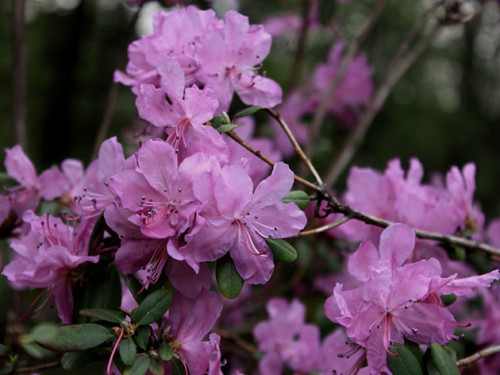
- Rhododendron Adams is an evergreen plant, loving stony slopes of Tibet and mountainous Far Eastern forests. It grows up to 50 cm in height, littered with oblong matte-green leaves up to 2 cm long, slightly reddish from the back side. Flowers with various shades of pink, flower small up to 1.5 cm diameter are collected in inflorescences from 7 to 15 pcs. in each. The plant is very rare and listed in the Red Book of Buryatia.
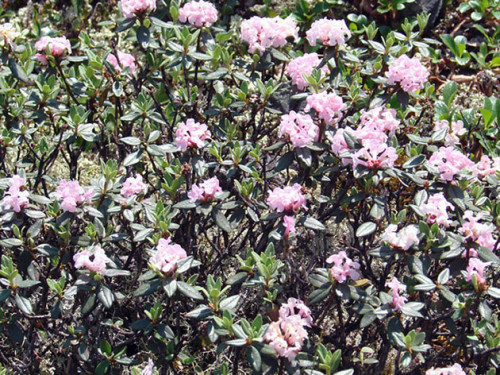
- Japanese - is considered one of the most beautiful deciduous varieties. It grows up to 2 m in height, the leaves are oblong-lancing with a soft flush on both sides, the color from green on the red and orange change in the fall. Flowers Japanese rhododendron bell-tired flowers with a diameter of up to 8 cm orange and red. Each inflorescence has from 6 to 12 pcs. A good winter hardiness and ease of reproduction (seed and vegetative) can also be attributed to advantages.

- Caucasian - a low shrub, whose sprinkled branches are covered with oval leathery dark green leaves, grated and reddish from the back. Flowers bell-simpic-shaped flowers, exacerbating light flavor. Inside the yellow zea you can see green specks. In inflorescence from 8 to 12 pcs. Caucasian Rhododendron has the following decorative forms: Rannetic with gentle pink flowers, with dark pink flowers and shiny green foliage, with yellow flowers and green spectacles inside, yellow flowers and red spectacles inside.
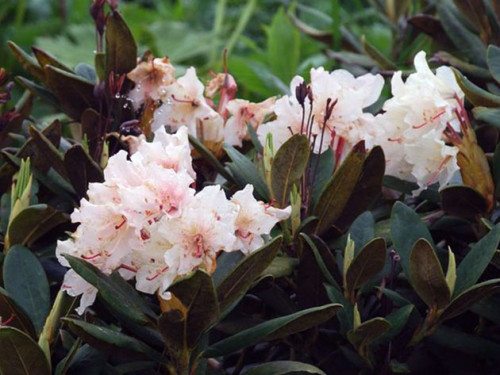
In addition to the above-described varieties in the gardens, Rododendron Albrecht, Vazeya, Larbura, Carpathian, Canadian, Holocelete, Pointed, Cryoliste and Many-Many others are grown.
I would also like to mention hybrid rhododendons. This aggregate of varietal forms and hybrids, which include the following cultural types:
- Alfred (a mixture of Variety of Everenin with Kethevbinsky Rhododendron) is an evergreen shrub growing at a 120 cm and an empty crown of 1.5 m diameter. The branches are covered with brilliant dark green foliage of the oblong-elliptical form. Flowers a bright purple tint, flowers with a diameter of up to 6 cm are collected in inflorescences of 15-20 pcs.
- Blue Peter (derived from the Pontic Rhododendron) - a shrub of 1.5-2 m high with a scattered crown to 2 m diameter. Flowers a lavender-blue tone, the flowers with a diameter of up to 6 cm differ in corrugated on the ends of the petals, and at the top of them you can see a dark purple spot.
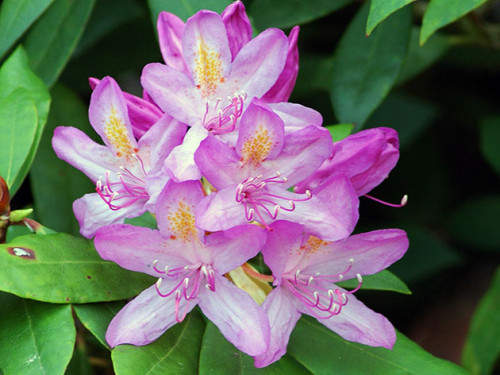
- Jacksoni - (Caucasian Rhododendron with Nobleanum) - shrub height up to 2 m and a lush crown to 3 m in diameter, but there is a low-speed variety up to 80 cm high. The branches are covered with matte green leathery slightly brownish from the back side. In inflorescences from 8 to 12 buds, when they are blooming, they have pink color, but over time be whiten, and yellow spots appear on the petals.
- Rosemary - (Pink Pearl with Rhododendron Magnificent) - The average shrub up to 210 cm in height, oblong-elliptical leathery leaves of light green color from above and blue-green back. Buds are blocked by gentle pink color, closer to the center by replacing the saturated-pink with a purple tide. In inflorescences from 6 to 14 pcs.
- Nova Domble - (Person Gloosum with Kethevbinsky Rhododendron) - high shrub up to 3 m and a crown to 3.5 m diameter, with large and shiny leaves and large flowers up to 6 cm with a diameter of red with black specks. In every inflorescence of 10-12 pcs.
- Canningham - (derived from Caucasian Rhododendron) Shrub height up to 2 m with dark green lesome leaves up to 6 cm long and dense joints with 10 white flowers with yellow-brown specks.
Rhododendron Garden Growing Rules
Growing a garden rhododendron in the conditions of the middle band is easy to know certain landing and care rules. In this part of the article you will learn how to do it.
Landing Rhododendron Garden
In the conditions of the middle band, it is rationally grown exclusively winter-hardy varieties. Landing Garden Rhododendron should occur from mid-April to mid-May, when serious night frosts retreated. Autumn landing is possible in September-October. In principle, Rhododendron can be planted at any time, in addition to the flowering period, because then all the forces of the plant go to maintain flowering and forming seed boxes.
You need to choose the right place to land. It should be a shaded area on the northern side of the garden. The land on it should be well drained, loose, enriched with humus. If underground waters go close to the surface (less than meter), plant rhododendron on the hill. The plant gets along perfectly with a pine, fir, oak and larch, as well as other cultures whose root system goes deep into. Remember, it has already been said above that Rhododendron has a surface root system, so you need to exclude the probability of neighborhood with similar plants so that they do not fight with each other for moisture and nutrients. For this reason, do not put the Rhododendron next to IWA, Maple, Chestnut, Poplar or Elm. If you fail to avoid such a neighborhood, insert between the plants to the barrier to the depth of 1 m. It may be slate, rubberoid or thick polyethylene film.
How to plant Rhododendron in open ground:
- Drop a hole with a depth of 40 cm and a diameter of 60 cm.
- Put the mixture of the upper peat and loam or clay in the 2: 1 ratio and thoroughly in the bottom.
- Drop into the mixture of a well of this size so that the root comedry is completely fit in it.
- Lower the seedlings into the water and wait until the air bubbles will last from the earthen coma.
- Place a com in the well, pour the remaining space with an earthy mixture and lose weight slightly. The root cervix should be on the level with the surface of the Earth.
- Understand the plant and spray a mulch from peat, fallen foliage, needle or moss layer with a thickness of 5 cm.
Useful advice: if there is a large number of buds on a saplau, remove some of them so that the plant does not spend all their few forces on flowering, and instead, it is well rooted. If you plant a single rhododendron on a free platform, bring it to rooting so that the wind does not roll the bush.
Rhododendron Garden breeding
Rhododendrons can be multiplied by seed and vegetative ways. In the first case, the seeds are sown in drawers with a wet peat or peers with sand in a ratio of 3: 1, after which they spill with clean washed sand and covered with a film to create a greenhouse effect. Periodically, the substrate is moistened to the appearance of the first greenery. This usually happens after 4 weeks. When a pair of real leaves appears, the seedlings are picked, dissolving them a little freely and shrouded into the substrate for seedy leaves in order to begin to form a root system. The first year of young rhododendrons spend in a cool greenhouse, after which they can be planted into the garden for training beds. However, it should be remembered that the seed reproduction always implies slow and long development, so in this case the blooming Rhododendron can be admired only after 6-8 years.
Cherenkov reproduction is not much easier than seed. Semi-restless shoots need to cut on a cutting of 5-8 cm long, remove the lower leaves from them and to withstand the cuts of 12 hours in Kornvin. After that, the lower cuts should be opened in the peat-sand mixture (3: 1) in the box and cover the film. For 1.5 months, leaf falling varieties are rooted, and evergreen is required twice again. Moving cuttings follows in spacious boxes filled with peat-coniferous mixture (2: 1). For the winter they need to be transferred to the cool bright room and maintain the temperature of 8-12c, and in the spring, it is shipped in the garden without removing from the box where to raise a couple of years before the transplant to a permanent place.
The easiest and most effective method of breeding Rhododendron is the drawing of melts. In the middle of spring, at the bottom of the bush, it is necessary to find a flexible young escape, bend it to the ground and put in a pre-digging groove with a depth of 15-20 cm in advance. The middle part of the escape should be pissed to the bottom of the groove, and then fall asleep with a samp of the garden with peat. The top of the escape needs to be out and tied to a vertical peg. Water the chain along with the main bush throughout the season, and in the late autumn or in the spring, we separate the already rooted chain and transfer to another place. This method of reproduction is optimal for deciduous types of rhododendron.
Garden Rhododendron Care
To care for Rhododendron is pretty simple - know yourself. To the bush is beautiful, it is necessary to cut it periodically, forming a crown.
IMPORTANT: in no case do not jump and do not loose the soil around the shrub so as not to injure the surface root system!
It is very important to maintain the constant moisture of the soil during the swelling of buds and flowering. Water Rhododendron only with rain or rescued water, for tough water can negatively affect the laying of flower kidney. To soften and at the same time a little acidic water, per day before irrigation, add a bit of the rigoric peat into it.
How often to water Rhododendron? Look at the state of the shrub foliage: if it becomes matte and loses the turgor (it becomes not so dense and smooth), it means there is a lack of moisture. Watering should be absolutely so that the water leaked to a depth of 20-30 cm. But at the same time it is necessary not to pour roots, so if you regret the shrub, but at the same time it shows signs of thirst, it suggests that moisture is too much.
Cut the rhododendron at a minimum - shrub and itself is quite capable of shaping the neat and correct shape of the crown. But in some cases, the "haircut" is still required, especially if we are talking about the too high shrubs. You also need to delete the frozen shoots and rejuvenate old rhododendrons. Make trimming at the beginning of spring before the attack. Old or strongly frozen branches cut into 30-40 cm from the ground level.
It is useful to know: Rhododendrons have one characteristic feature - one year they bloom very magnificently, and the next season is much more modest. To shrubs pleased with the eye every year, immediately after flowering, remove faded inflorescences. So you will send Rhododendron's forces on food and laying new flower kidneys for the next year.
Make the first feeding at the beginning of the spring, the last - after flowering. For Rhododendron, liquid fertilizers from horny flour and liquid reassured cowhroud are best suited. Fill it with water (1:15) and insist 3-5 days. Before making feeding, be sure to break the shrub so as not to burn the roots. Rhododendrons love acidic soil, so in order not to disturb the reaction with mineral fertilizers, use superphosphate, phosphate or nitric acid potassium, selfish ammonium and calcium. Potash fertilizers need to be entered highly diluted. It is recommended to enter organic or mineral nitrogen fertilizers in the spring, and after flowering, superphosphate, selfish ammonium and potassium.
To wintering, rhododendron is prepared as follows: For the middle strip, it is enough to shove the coniferous branches between the branches of the bush. It is also recommended to put the Earth around the mulch from peat and needles.
Diseases and pests Rhododendron Garden
The most dangerous and annoying pests of Rhododendron are milders, a web tick, rhododendron flies and a shield. Also, slugs and snails can be bought. All the brickelogs can be collected manually using a 8% solution of Fungicide TMTD or TIRAM.
From the spider tick, rhododendron flies and weevils helps processing diazine. If the shrub was hit by a weevil, it is recommended to additionally treat the earth insecticide around it. Carbofos will help against other insect pests.
As for the disease, the most often Rhododendron is exposed to fungal diseases: leaves, rust, chlorosis and cancer. As a rule, they provokes insufficient aeration of roots, so it should not be too often and plenty of plants. Preparations based on copper samrups (Brodskaya liquid) help against rust and spot. And to defeat cancer, you will have to cut the affected shoots or delete them up to a healthy part.

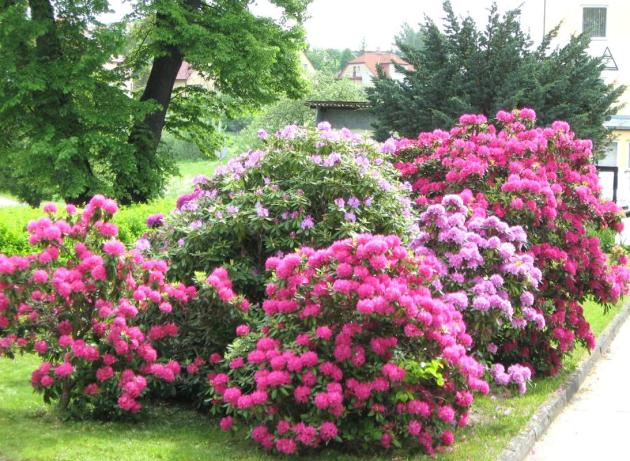
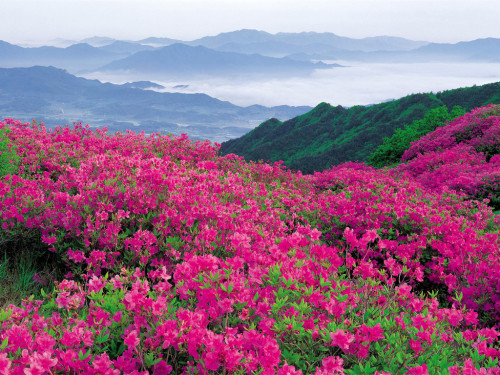
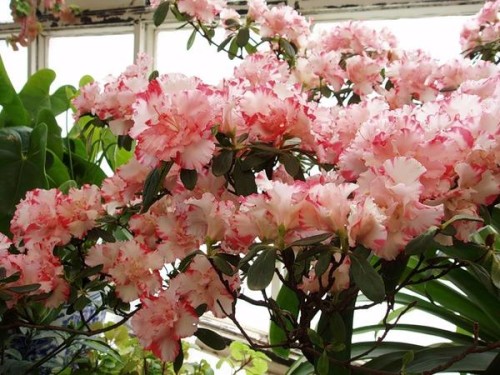
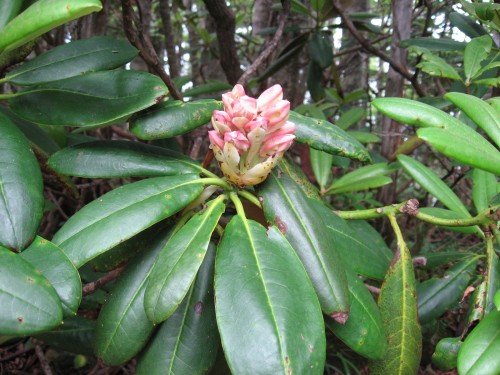
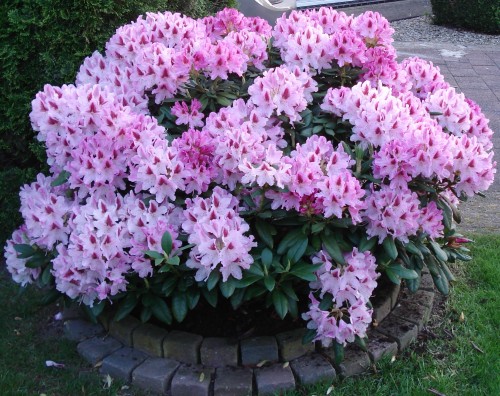
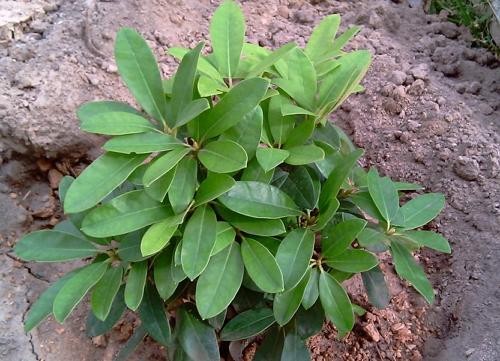
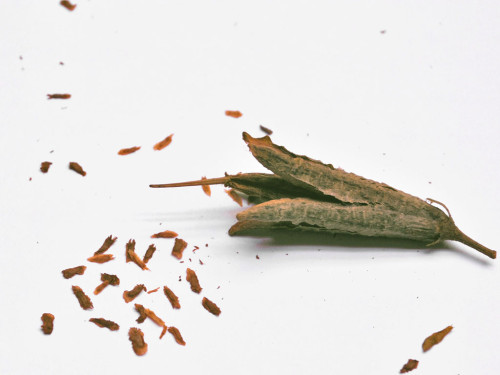
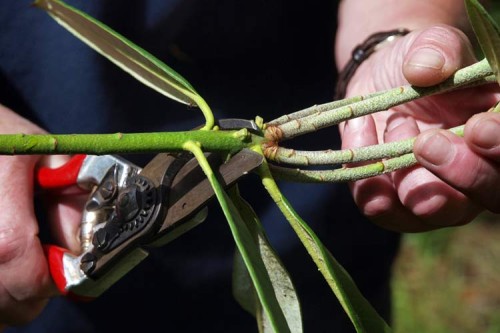
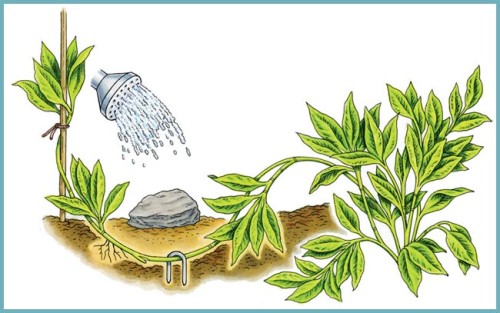
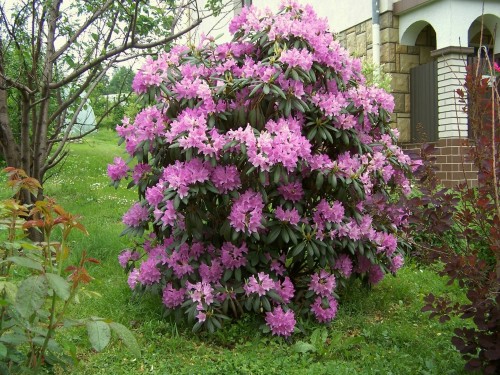
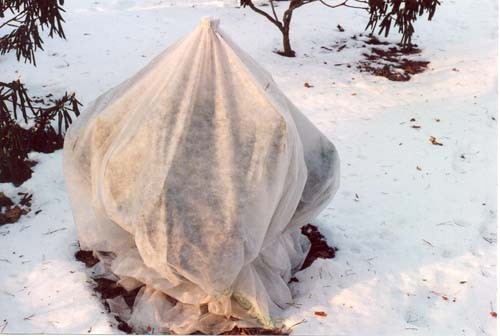
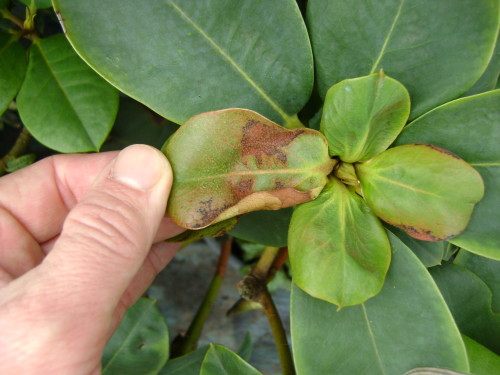

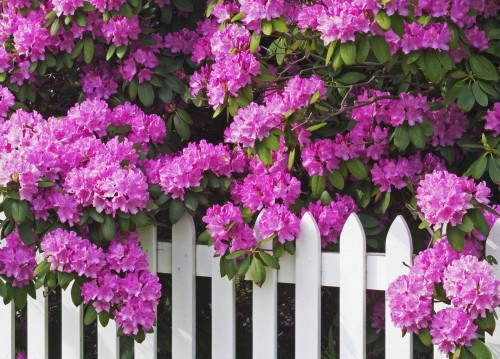
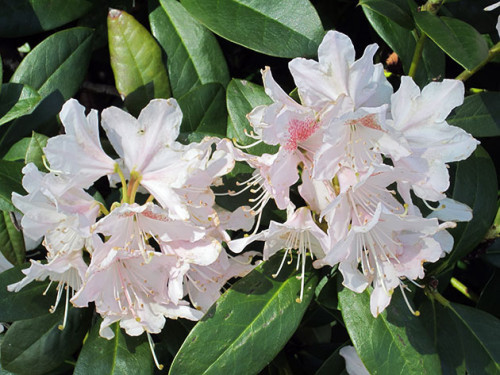
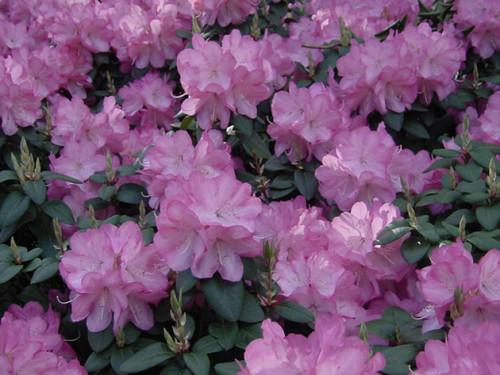
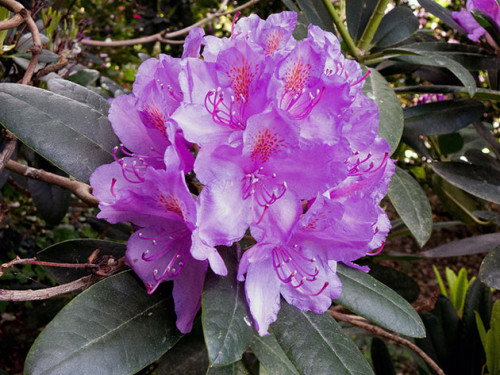
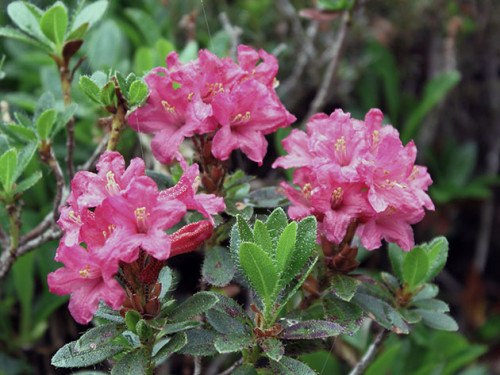
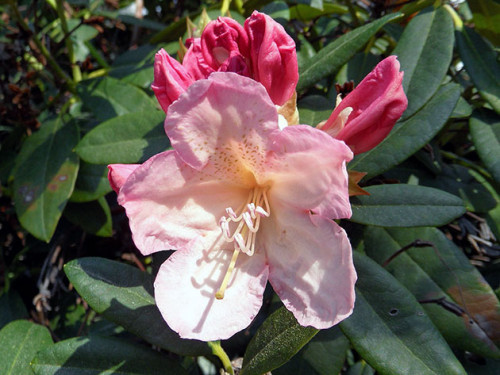













 Start a discussion ...
Start a discussion ...